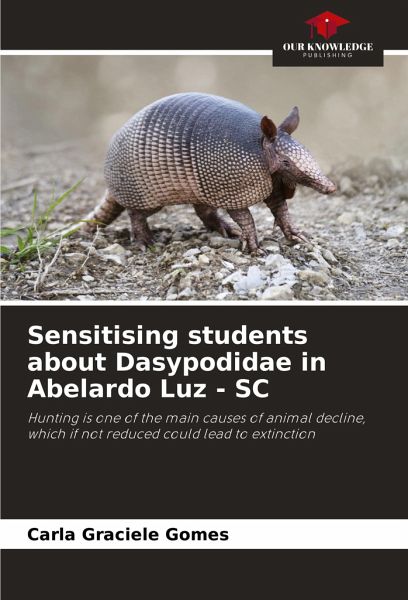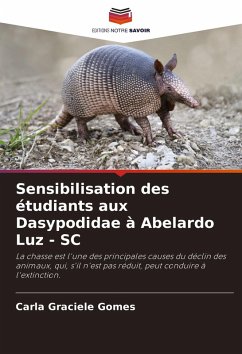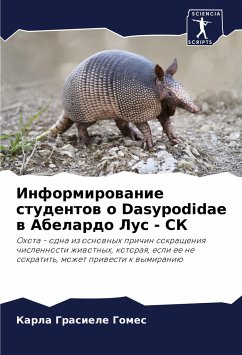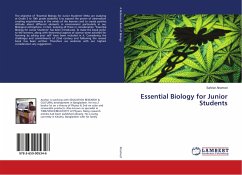
Sensitising students about Dasypodidae in Abelardo Luz - SC
Hunting is one of the main causes of animal decline, which if not reduced could lead to extinction
Versandkostenfrei!
Versandfertig in 6-10 Tagen
27,99 €
inkl. MwSt.

PAYBACK Punkte
14 °P sammeln!
Armadillos are the common name given to placental mammals that belong to the order Xenarthra and family Dasypodidae. They are characterised by having dermal bone plates that form the bony carapace (osteoderms) (NOWAK, 1999; WETZEL, 1985), as well as having simple or absent teeth in many cases, a fact that gave them the name Edentata (HILDEBRAND & GOSLOW, 2006). They are fossorial animals that use their claws to dig (BLOCH et al., 1976). Despite their ecological importance, armadillos are still targeted as food resources in rural areas in Brazil, despite this practice being prohibited by the co...
Armadillos are the common name given to placental mammals that belong to the order Xenarthra and family Dasypodidae. They are characterised by having dermal bone plates that form the bony carapace (osteoderms) (NOWAK, 1999; WETZEL, 1985), as well as having simple or absent teeth in many cases, a fact that gave them the name Edentata (HILDEBRAND & GOSLOW, 2006). They are fossorial animals that use their claws to dig (BLOCH et al., 1976). Despite their ecological importance, armadillos are still targeted as food resources in rural areas in Brazil, despite this practice being prohibited by the country's environmental protection agencies (DEPS et al., 2003). According to Alves et al. (2012), hunting and other uses of wild fauna are ancient practices and date back to the time when human-environment interaction was based on survival needs, such as obtaining food, clothing and protection. This practice has been maintained as a cultural activity in some communities, negatively impacting some of the species targeted and generating an ecological problem (ALVES et al. 2012). One of the groups impacted by these endeavours is the Dasypodidae.














